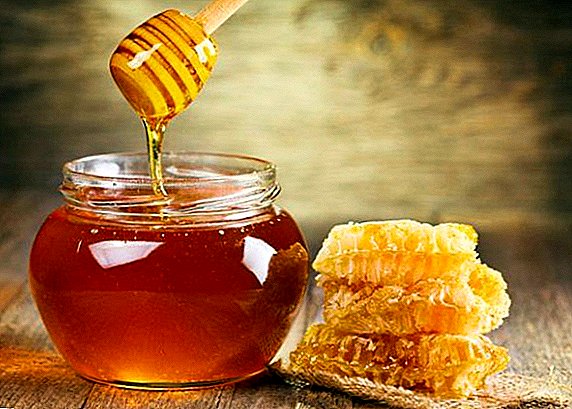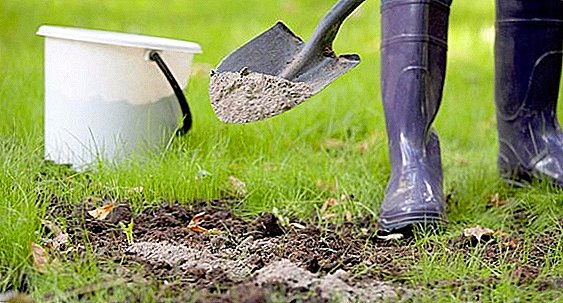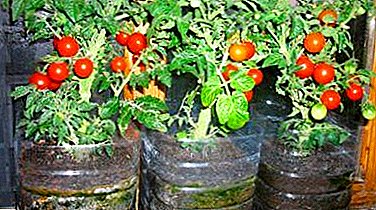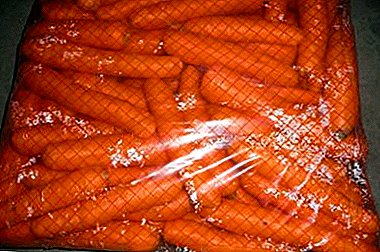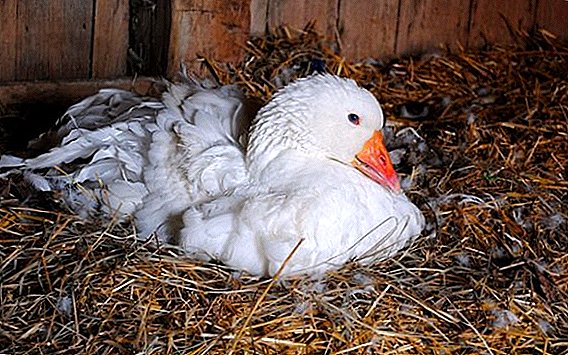 Poultry is of great benefit to agriculture: it is well established in captivity, gives important products such as meat, eggs, down and offal. Representatives of large poultry - geese, are valued for a large mass of eggs, rapid weight gain and massive fatty liver. Egg production is one of the main indicators by which bird productivity is assessed. This article will discuss the relationship of goose egg production with its breed, the principles of increasing egg production, optimal conditions for keeping geese and methods for producing more eggs from one individual.
Poultry is of great benefit to agriculture: it is well established in captivity, gives important products such as meat, eggs, down and offal. Representatives of large poultry - geese, are valued for a large mass of eggs, rapid weight gain and massive fatty liver. Egg production is one of the main indicators by which bird productivity is assessed. This article will discuss the relationship of goose egg production with its breed, the principles of increasing egg production, optimal conditions for keeping geese and methods for producing more eggs from one individual.
When the geese start flying
These birds reach sexual maturity at the age of eight months. In the same period, the first egg begins to form in the goose's uterus. These birds will carry eggs regardless of whether they were paired with a male or not.

Egg production in geese occurs in March-April and lasts an average of five months. This bird reaches maximum productivity at the age of three and brings a stable large number of eggs for the next two and a half or three years.
Important! This bird is especially freezing paws and beak. Cover the floor in the house with a thick layer of dry grass and do not let the flock out into the street during bad weather.
Geese egg production: average
The average number of eggs laid by a goose varies from 40 to 130 pieces per year. It depends on many factors:

- First and foremost, the productivity of the breed is influenced by the breed of bird.
- The second degree of influence is age. In young products, one and a half to two times less than in adults.
- The season of the year affects the domestic geese just like the wild ones: in late autumn and winter, they need to be stimulated to get eggs.
- Excessive fattening is bad for birds, as well as nutritional deficiencies.
- The last factor - the conditions of detention, determine the bird instincts. If she considers the conditions unfavorable, the formation of eggs will slow down or stop.
Find out when geese start flying at home
How many eggs are geese, depending on the breed
There are egg, meat, egg and meat breeds. The highest productivity is observed in representatives of the egg type.
Gorky
Obtained from the crossing of Chinese and Solnechnogorsk breeds. These are large individuals weighing up to eight kilograms with white plumage. Egg mass is average, about 140-150 grams, the number - up to 50 pieces per year.

Did you know? For the first time in the Slavic countries, domestic geese appeared at the turn of the XVI-XVII centuries. Here a large number of new breeds were bred by crossing with wild geese. Subsequently, the huge flocks of this poultry were distilled to Europe for sale, and they were getting under their own supervision under the supervision of shepherds.
Large gray
Treats heavy type of meat breeds. Very little is carried - up to forty pieces a year. Geese are bad chicks.

Toulouse
Adults are prone to obesity. Lazy, inactive, well fed, give a massive fatty liver. Up to forty very large eggs are carried annually (190–200 g).

It will be helpful for novice poultry farmers to learn how to breed geese at home, why geese are sick and how to treat them, how to properly feed geese from the first days of life.
Kholmogorskaya
The largest representatives of the breed - weigh up to ten kilograms. Adults have a characteristic bump on the forehead and a "purse" on the lower part of the beak. Geese - good hens, demolished from 40 to 90 pieces per year, depending on age. The average egg weight reaches 210 grams.

Chinese
Relatively small birds - adult representatives of the breed weigh up to 4.5 kg. They have excellent egg production, give up to one hundred and twenty pieces per year. For this reason, they are used in breeding to improve this quality in other breeds.

Get acquainted with the most profitable, wild, Tula breeds, and also geese of the Linda breed
Emden
Comes from Germany, belongs to heavy meat breeds. Intensively gaining weight from four months of age. Females bring between twenty and thirty medium-sized eggs.

Important! An overfed bird has a reduced productivity compared to a moderately well-fed individual. You can check the degree of feeding by probing the wings. If noticeable fatty tubercles appear on them, it means that you overdone with the intensity of fattening.
How to increase egg production: proper bird care
An adult productive goose reacts to changes in temperature, pressure, daylight hours and many other factors.
It is interesting to learn how such representatives of birds are kept at home: quails, guinea fowls, ducks, peacocks, pheasants, ostriches, partridges, pigeons.
Conditions of detention
These birds are resistant to frost, so even in winter they are kept in unheated rooms of medium size. The roof must be insulated, the floors are lined with clean dry straw or hay. The optimum humidity in the room - 30%. At higher values, geese can chill and catch a cold. The temperature is maintained at zero degrees due to the heat of the birds themselves. They are released into the yard for the whole day, if the weather is good, and if possible, they are driven to a pond or river so that they clean feathers and swim.

In the warm season geese are kept in open pastures with good low grass. One adult should have at least two kilograms of fresh herbs per day. With a shortage of succulent feed they feed in the evening. If there is no water, in the yard must put a wide tank with clean water so that the birds can swim in it.
Did you know? These birds have an unusual structure of the genitals. The penis of males has a spiral shape and a very small length (up to 1 cm). When mating, it emerges from the cloaca and is placed in the same spiral-shaped goose egg-wire. In case an unfamiliar male has mated with a goose, his sperm will not fall into the egg conduit, but into one of its false pockets so that fertilization Did not happen.
On hot days, mount a light canopy or drive the bird under fruit trees. The floor in the house is covered with dry hay. A damp litter provokes fungal diseases of the paws, a hard floor without a litter of geese is also not suitable.

Lighting in the house affects egg production. Geese have high productivity only with a long light day, so the birds are driven into the room with the onset of the evening and there they are illuminated with fluorescent lights. In order for the birds to produce a lot of products, the duration of daylight is increased to 12-14 hours. It is important to air the room during the day while the geese are on the pasture. At night, the vents are closed to protect the bird from drafts.
Read also about the features of growing goslings in the incubator.
Proper nutrition
Special attention should be paid to the winter feeding period. It is he who determines the size of the spring and summer egg-laying. For each head, the daily ration is calculated based on the need for protein, fat, carbohydrates and minerals. They are supplemented with vitamin supplements and premixes. Geese willingly eat grain (160-150 g), root crops (500 g), steamed chaff (150 g), hay mash (70-120 g) and sauerkraut (60-120 g). Grain is fed in the evening.

In late January or early February, animal products are introduced into the ration of geese. This includes meat and bone meal, fish waste, cottage cheese, yolks of chicken eggs. Cottage grain increase to 200-230 g per day. In the summer, these birds feed on succulent fodder. They willingly eat dandelion, sow thistle, nettle, sorrel, plantain. Water they need to give plenty.
Important! For good health geese need the opportunity to swim. If there is no reservoir nearby, place a spacious trough in the yard or a children's pool with low sides. Be sure to change the water to clean at the end of each day.
Tricks of farmers: how to get the maximum number of eggs from a goose

- Take the clutch immediately after the demolition and store at + 12 ° C. If more than five of them accumulate in the nest at the same time, the goose instinct will start for the goose, and in the future it will not fly.
- If the day length is shortened, extend it in the house with fluorescent lights. A goose will only fly well at twelve hours of light.
- Put near the sennik or trough trough with crushed chalk and eggshell. This feeding will compensate for the lack of calcium in the queens and provide high quality products.
- Build nests and place 1-2 models in them. The goose will rush more willingly if he sees that the beginning of the laying has already been made.
- Put partitions between the nests so that the birds do not roll the eggs from the nest to the nest instead of being carried on their own.
- From time to time, let go of the goose goose. In females who regularly see the male, egg production increases.
Did you know? Ink pens with a steel case appeared only at the beginning of the XIX century. Before that, people used sharpened goose feathers for writing. Hollow inside, they absorbed a small amount of ink and gradually gave them away when they pressed the paper. For their sharpening used small knives, called penknives. The custom of sharpening quills for writing is gone, and the name behind the knives is fixed at the present time.
Egg production in geese does not last long: they, like the wild representatives of the genus, are characterized by seasonality. Preparation of birds for spring egg-laying should be started in advance: a month before the expected start date of laying, the dacha of grain feeds and premixes increase. It is important to keep hens in a clean and dry house with good ventilation. Only comfortable conditions and abundant food will make geese resistant to various stresses and ensure their high productivity.
Reviews from the Internet


Kuban Huska rushes like a drummer - almost every day, the rarest one every other day. As it is written about this breed - egg-laying, they say. A large gray husk rushes up the mountain-aaaesdo less often, but it stands for a long time over the nest, plucking itself and laying a nest in feathers - it means that it is ready to sit down. This, too, was in the description of the breed that the large gray ones are rushing less, but good parents.
As long as everything goes according to plan



